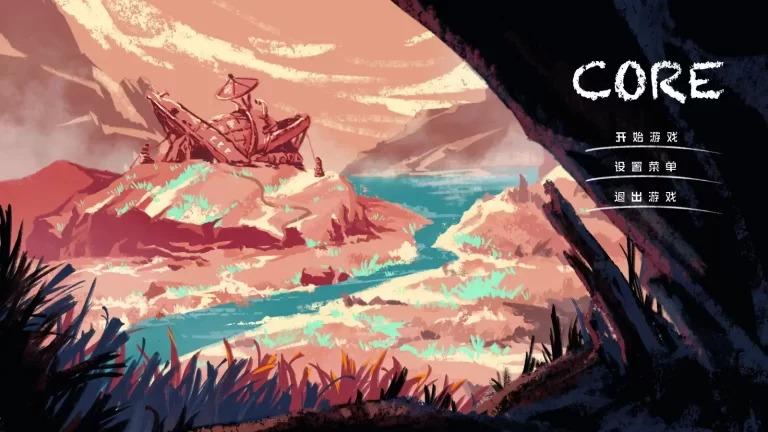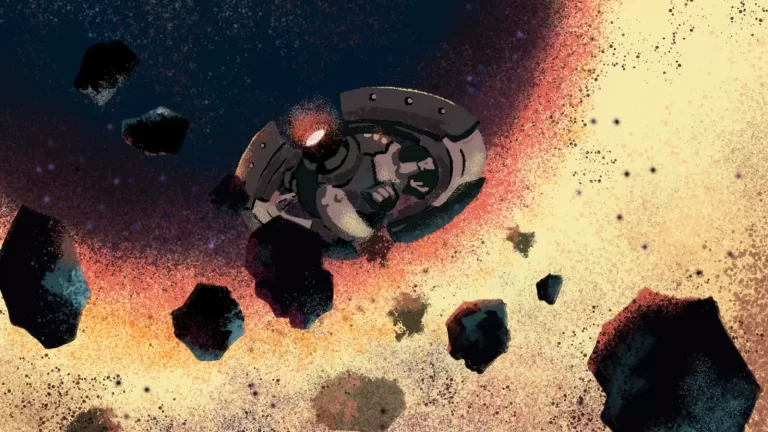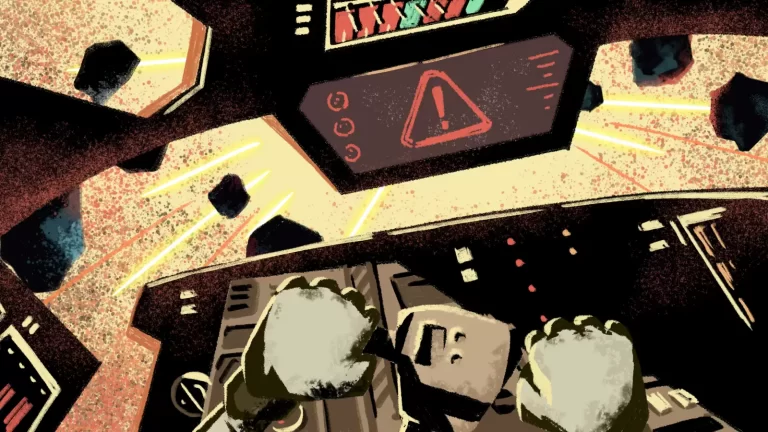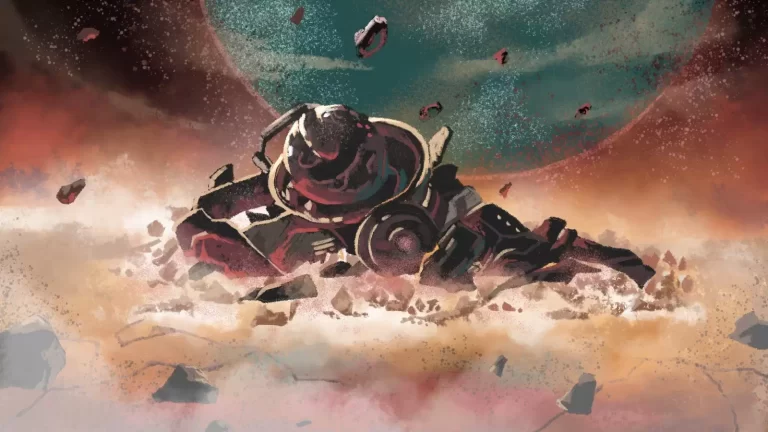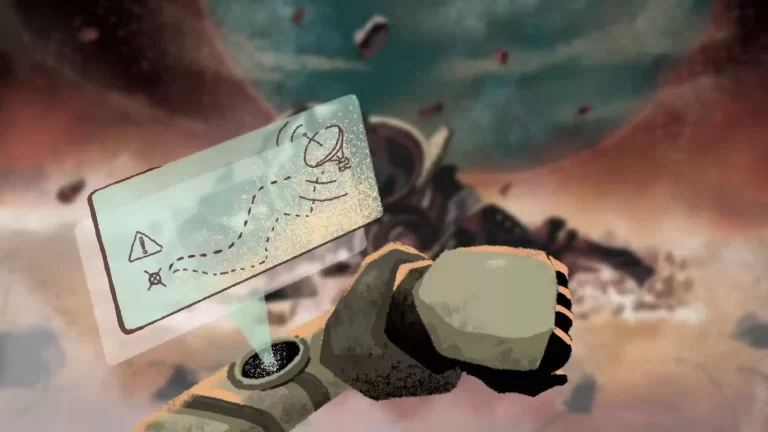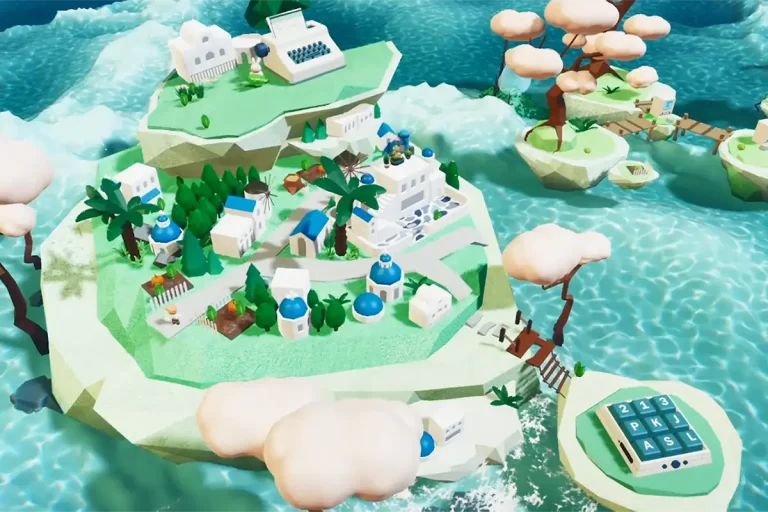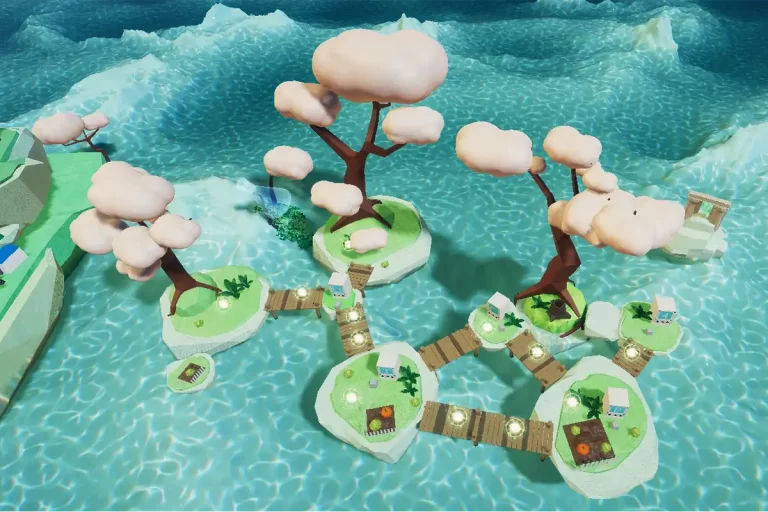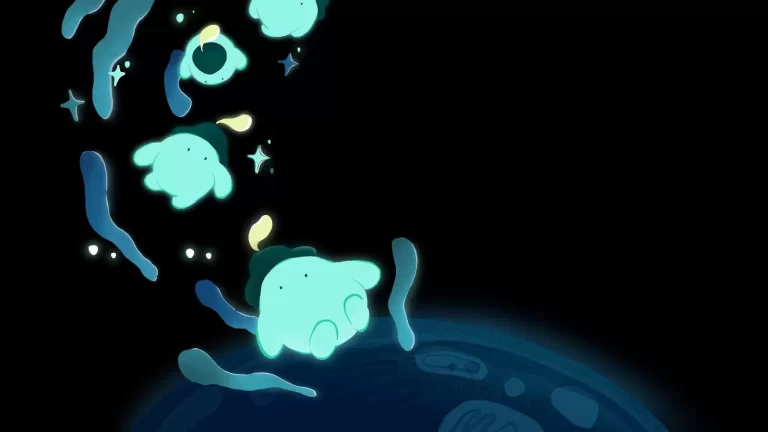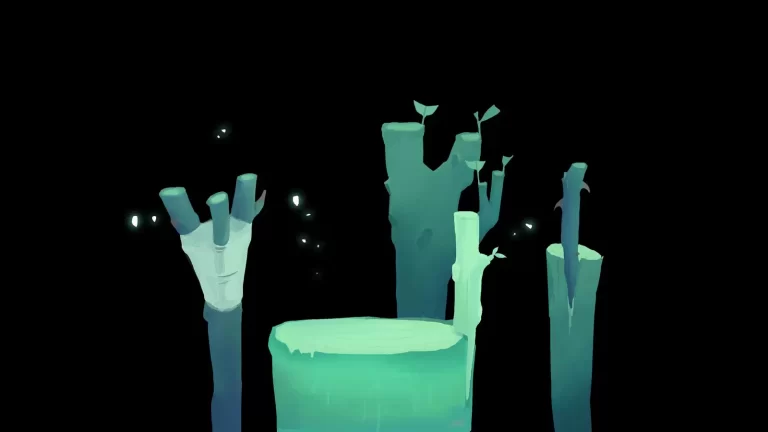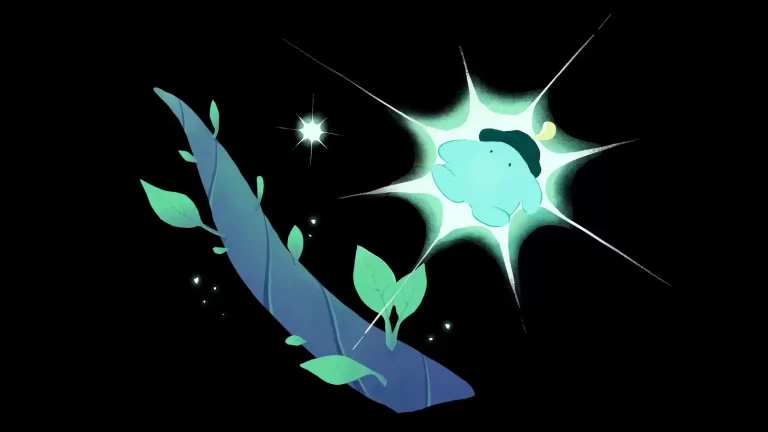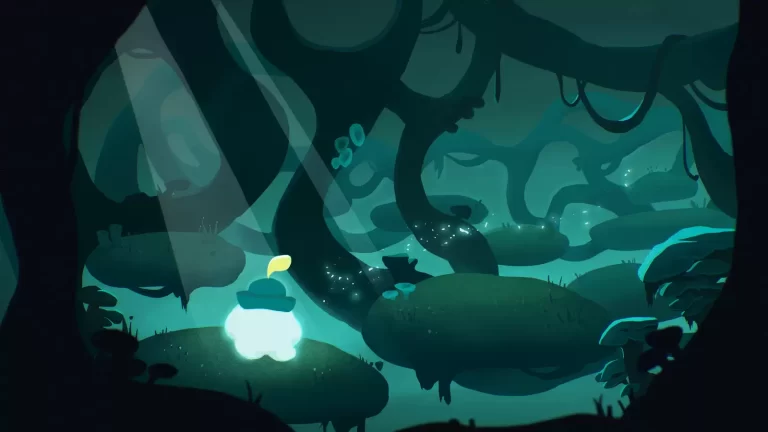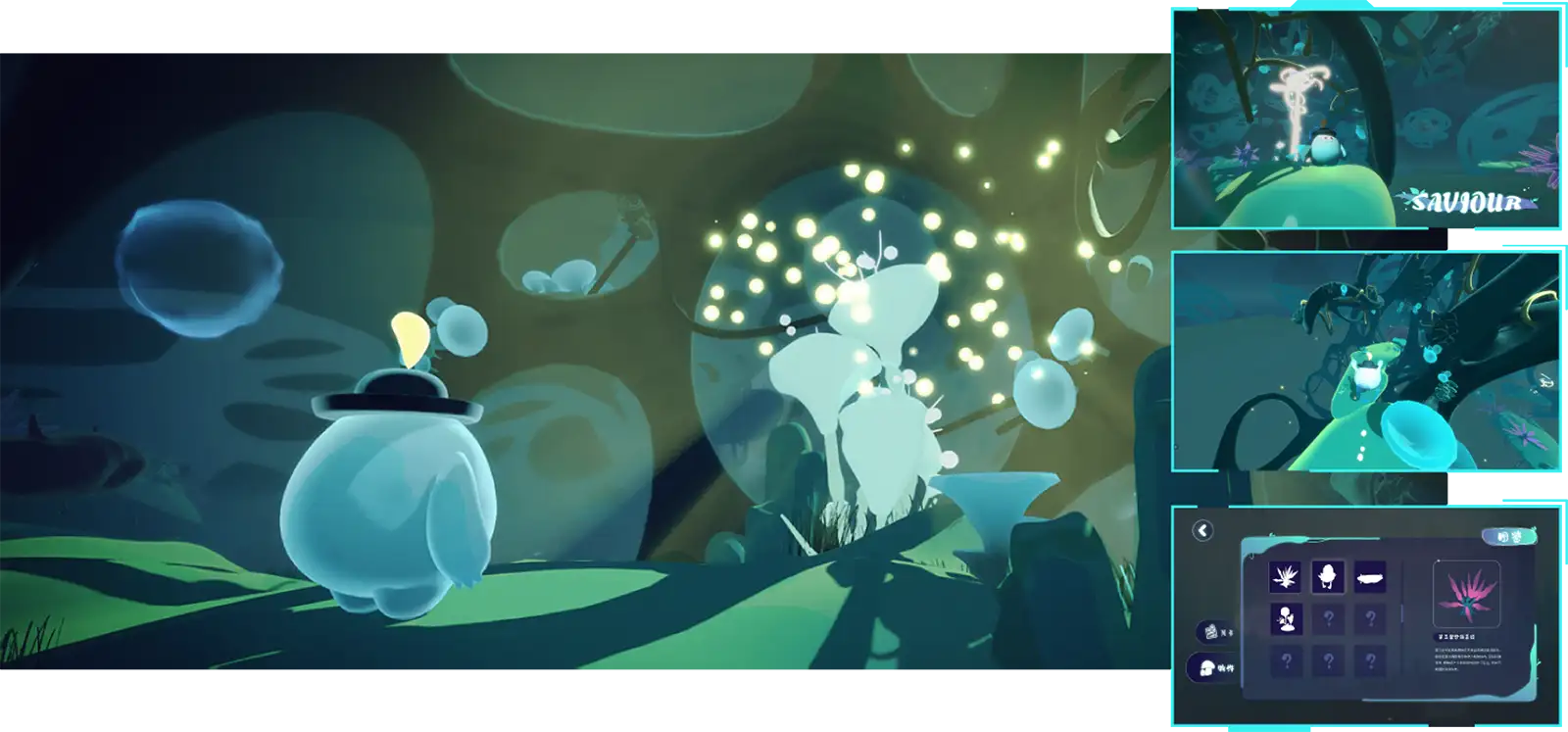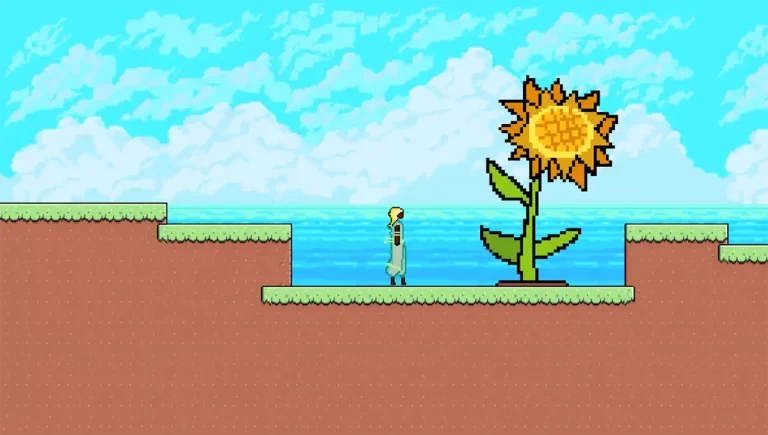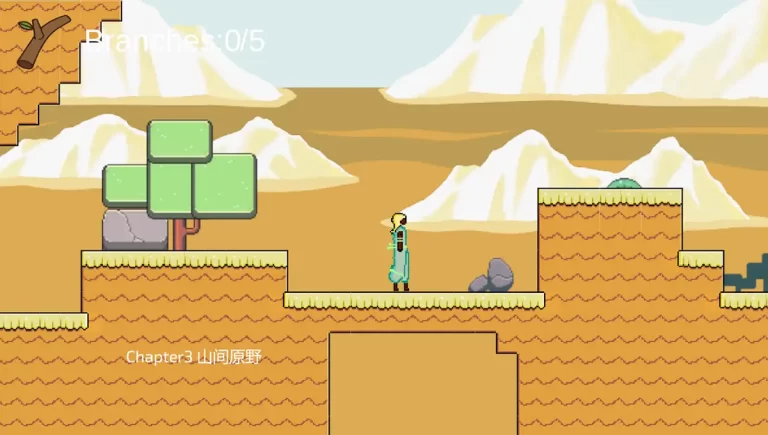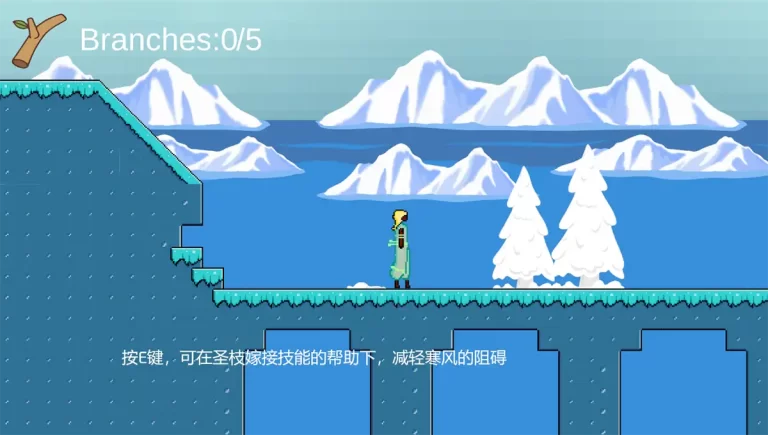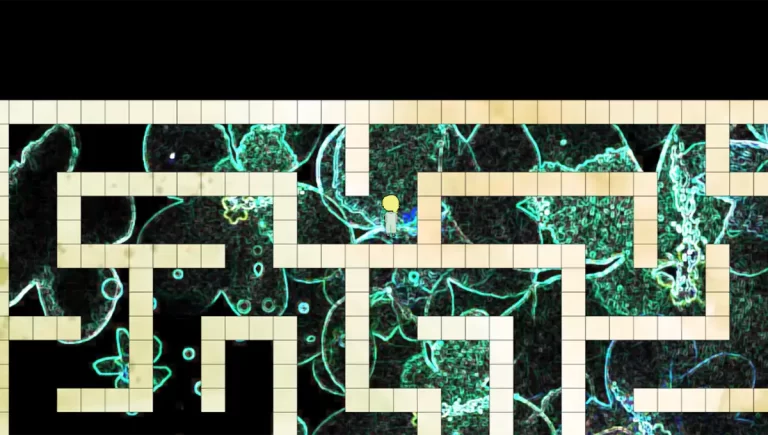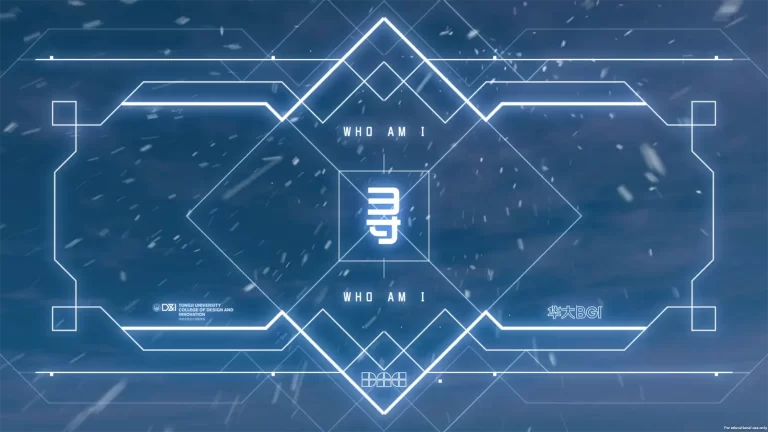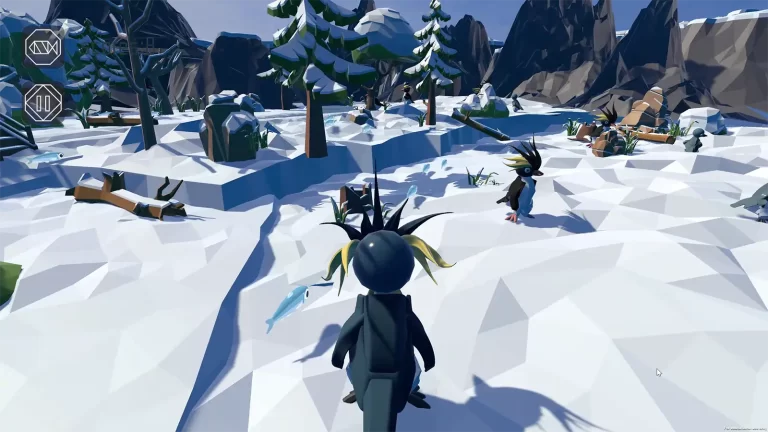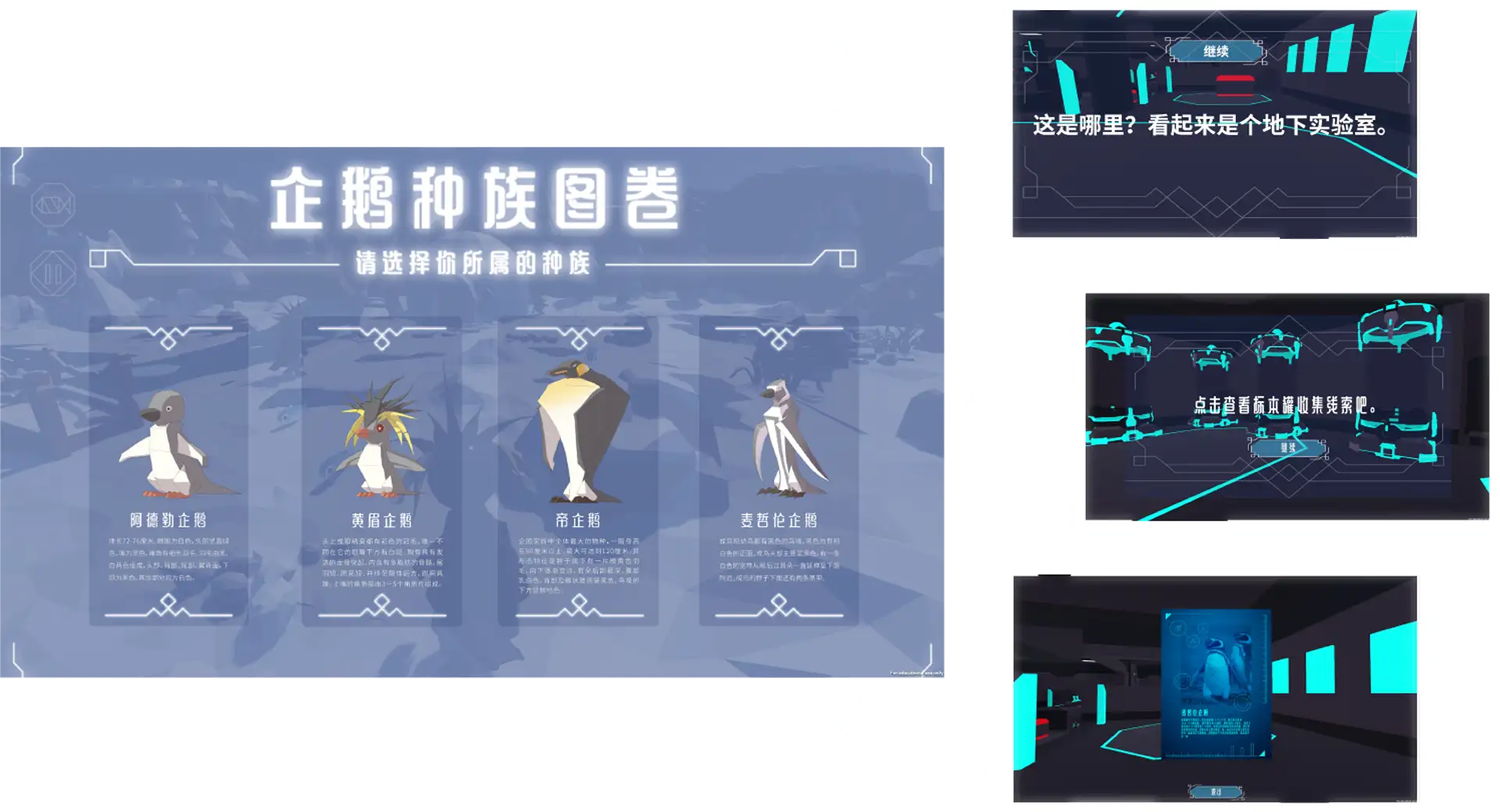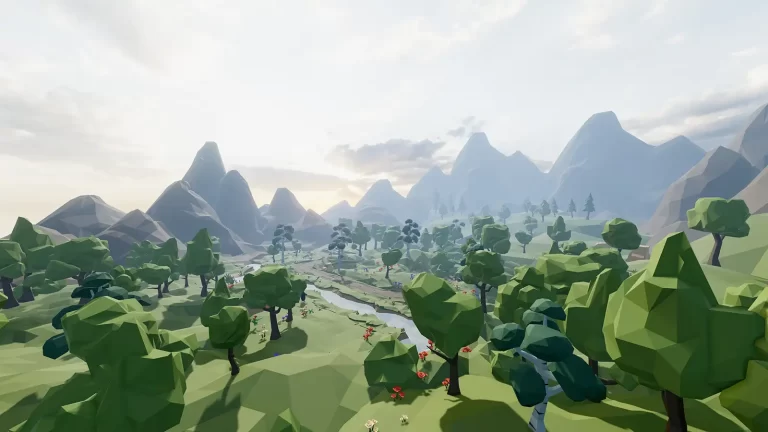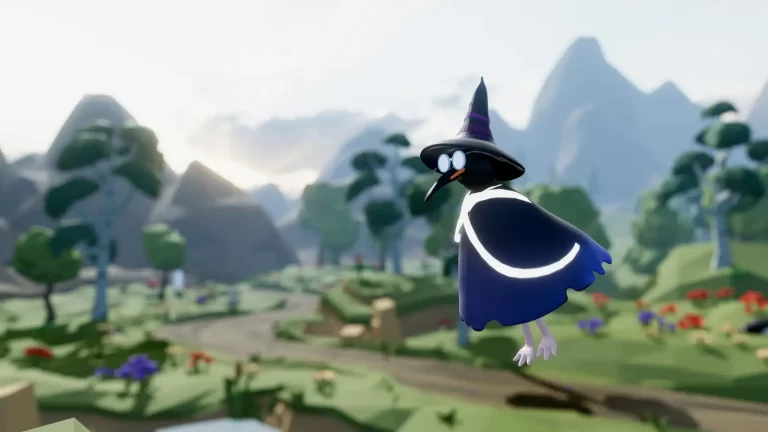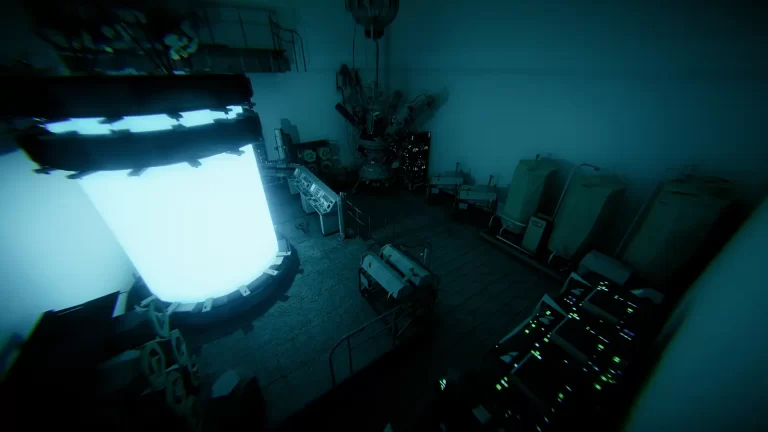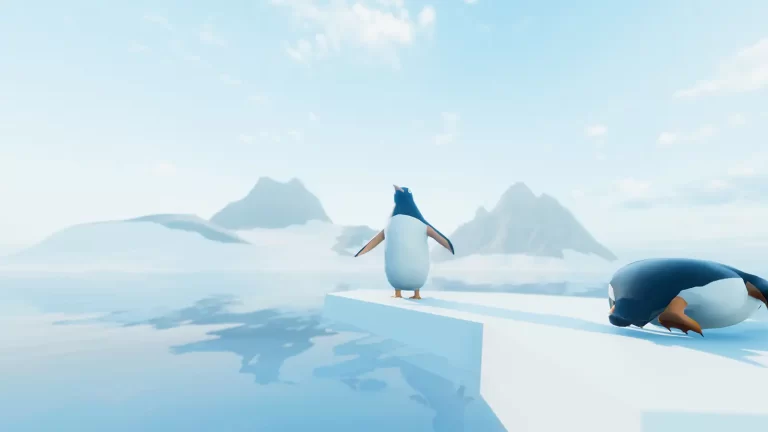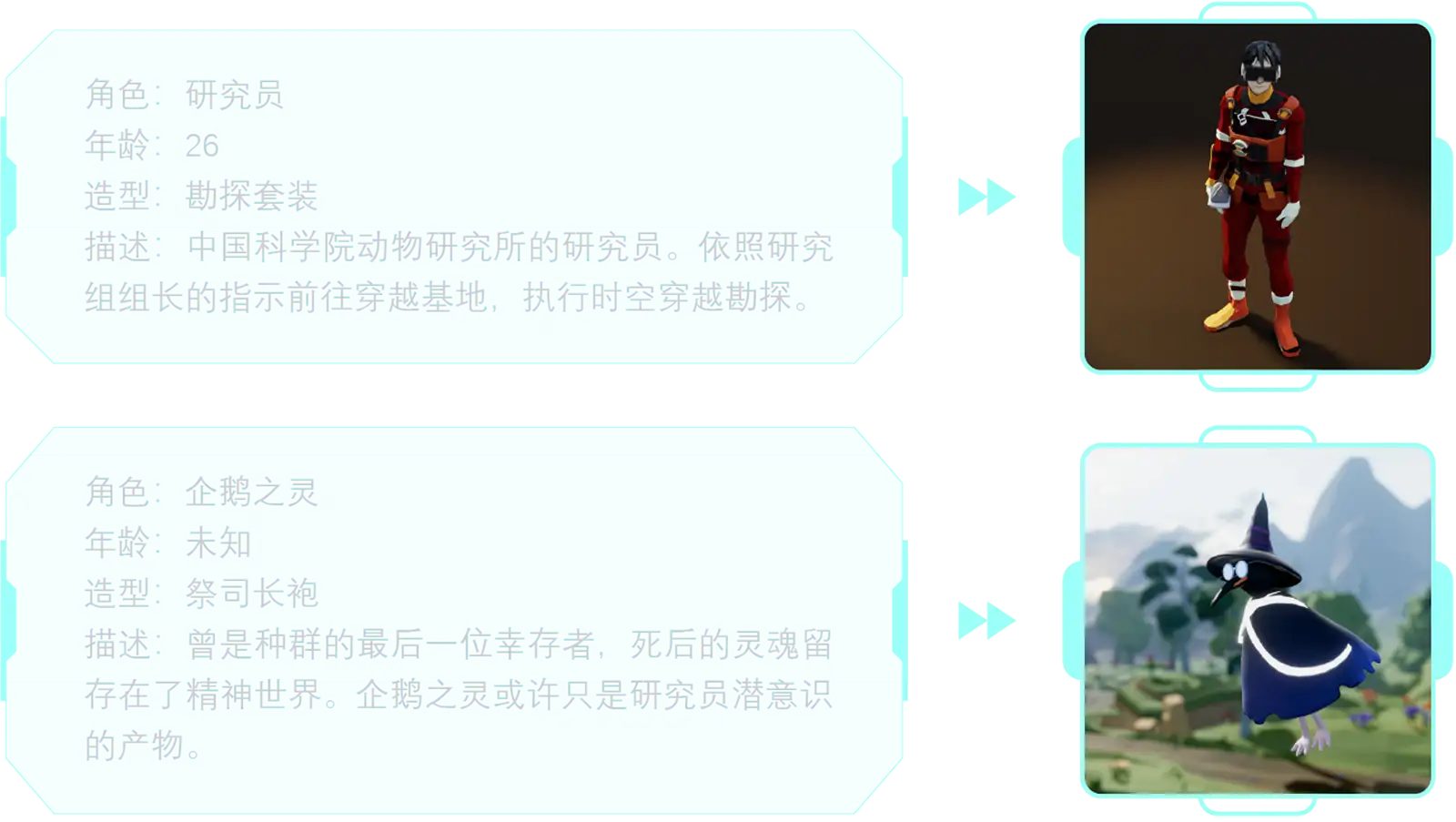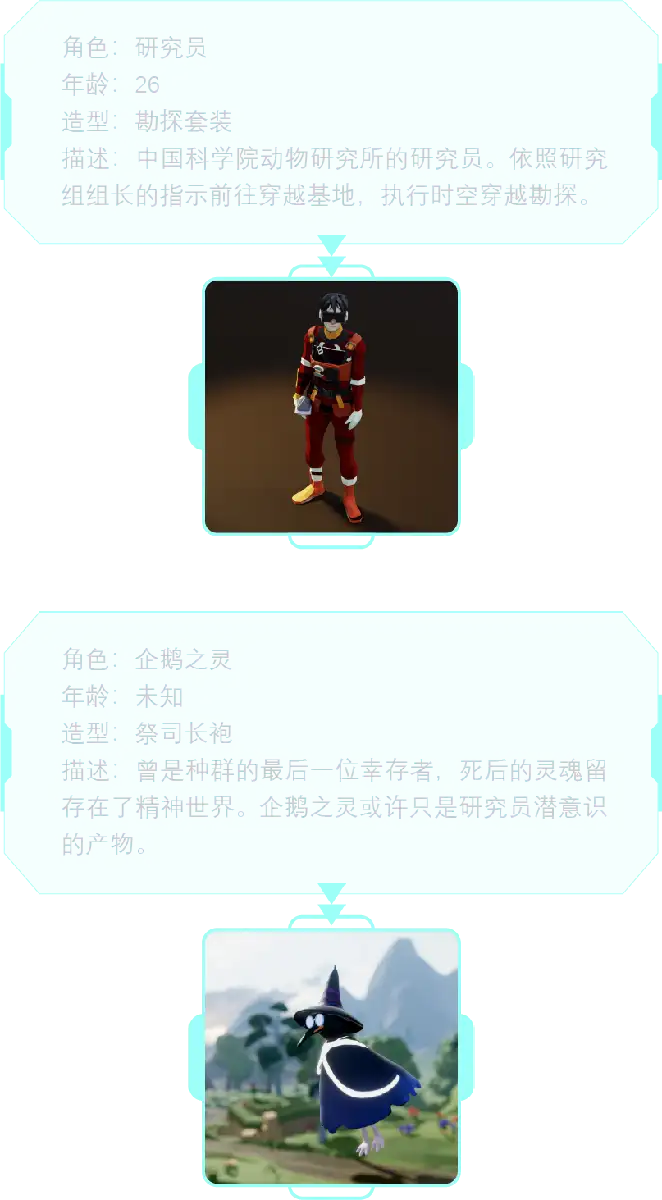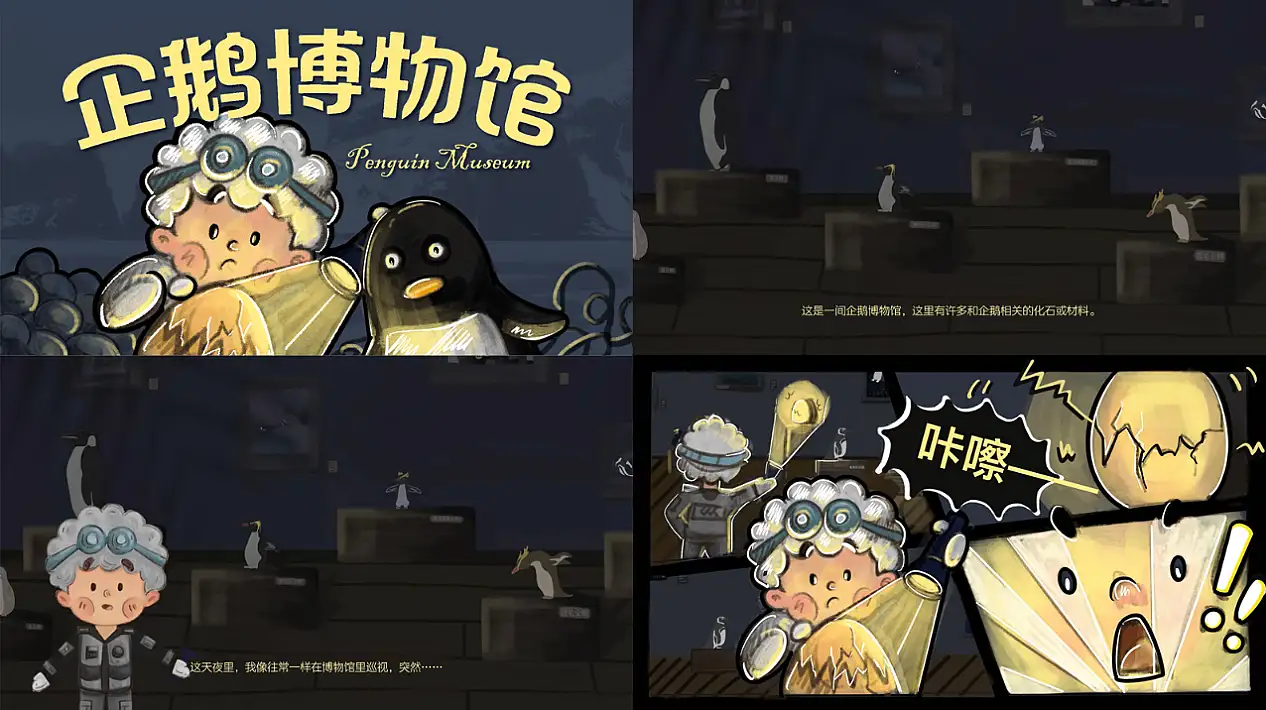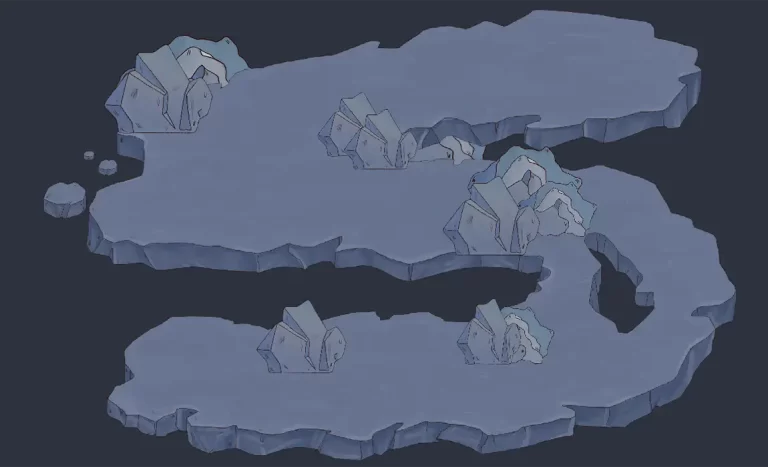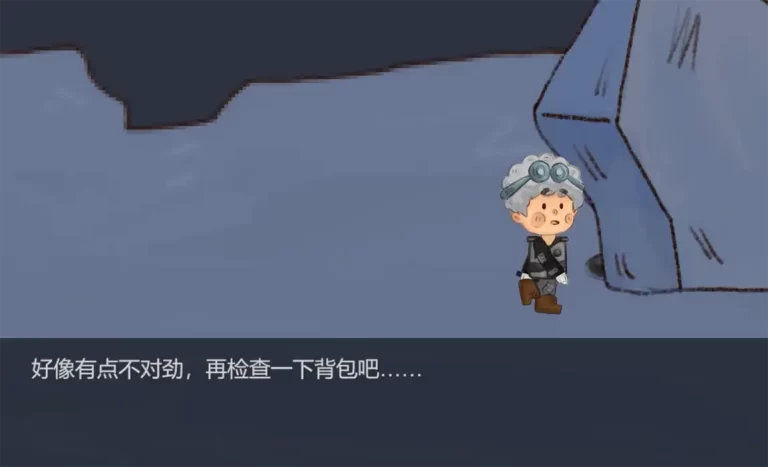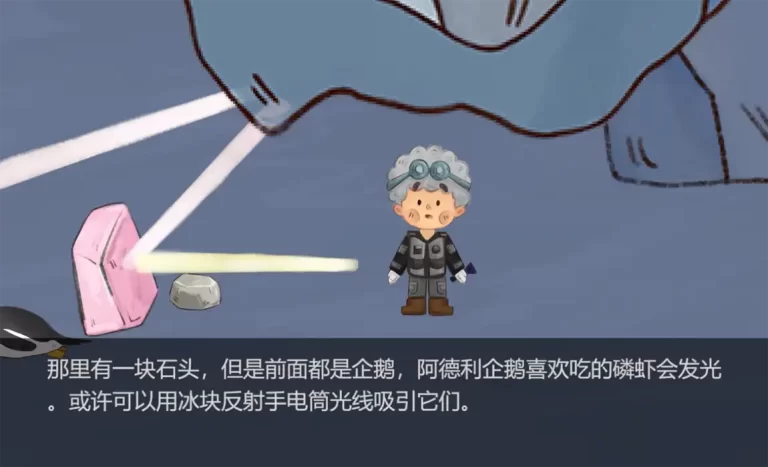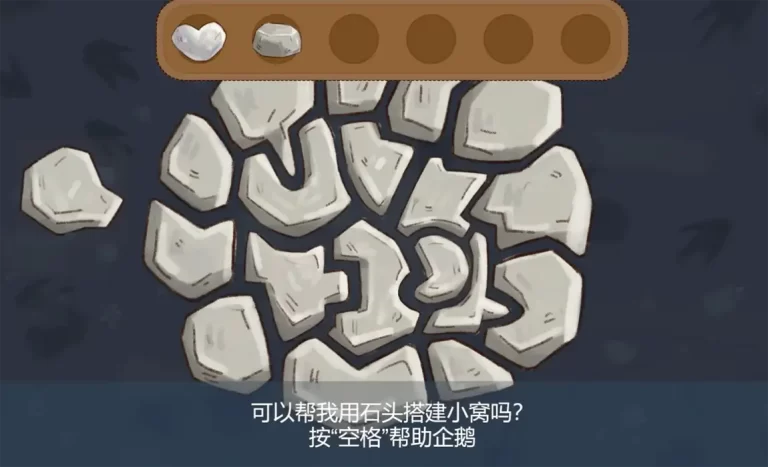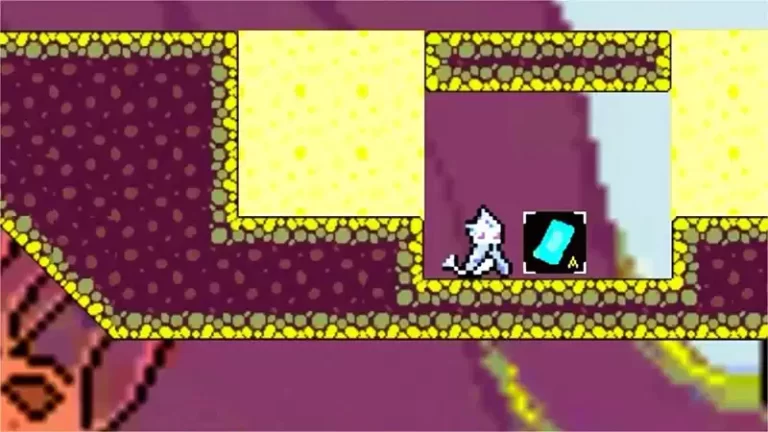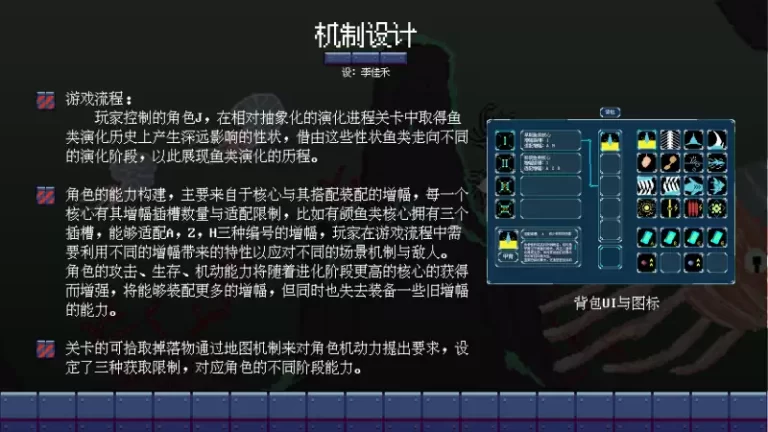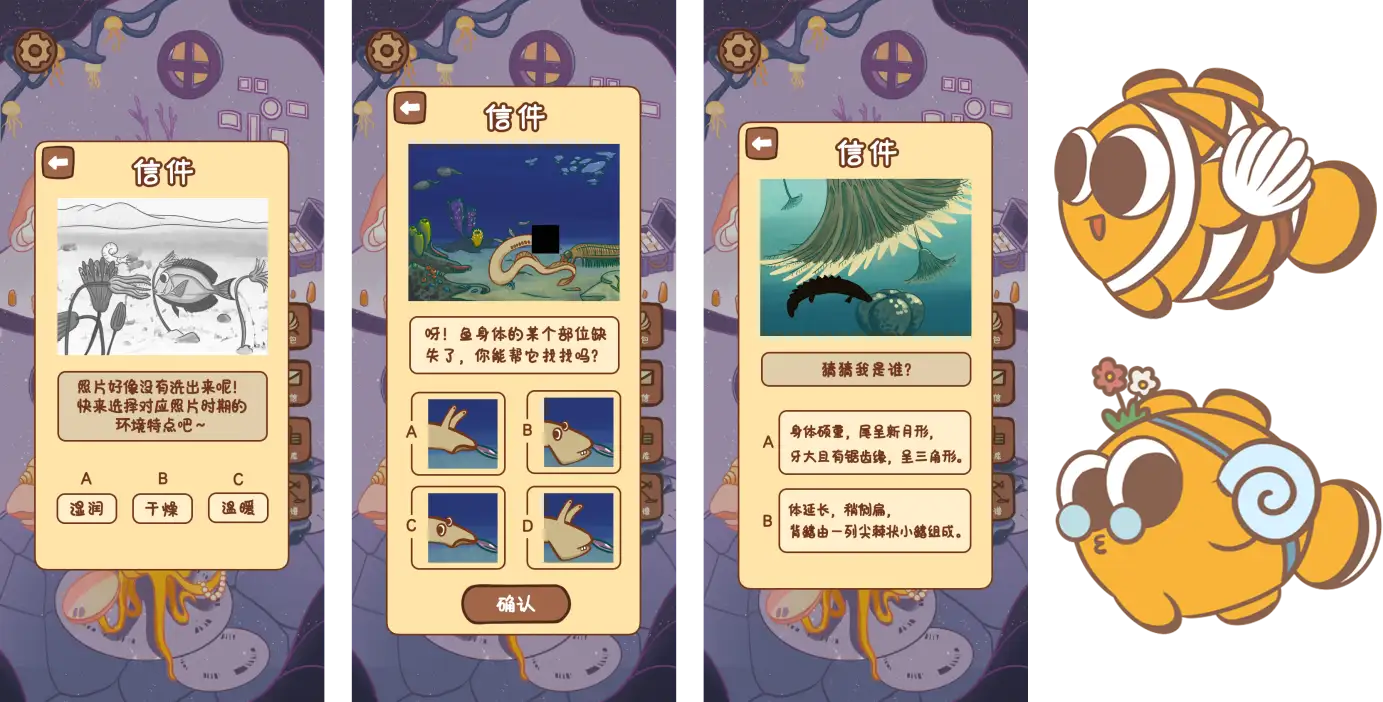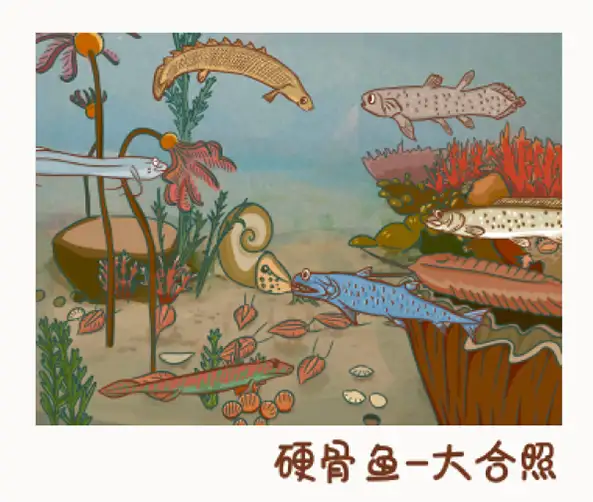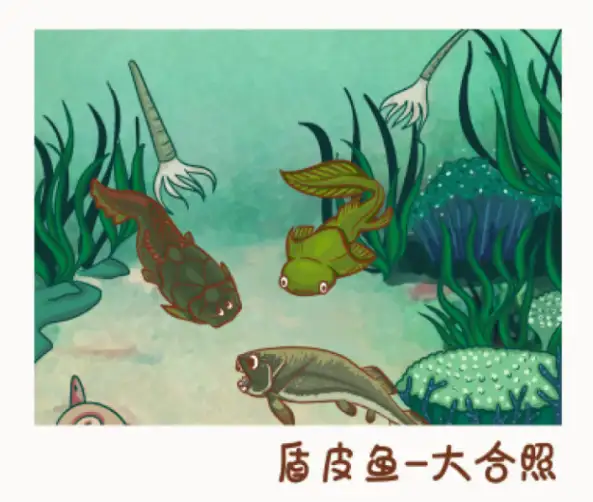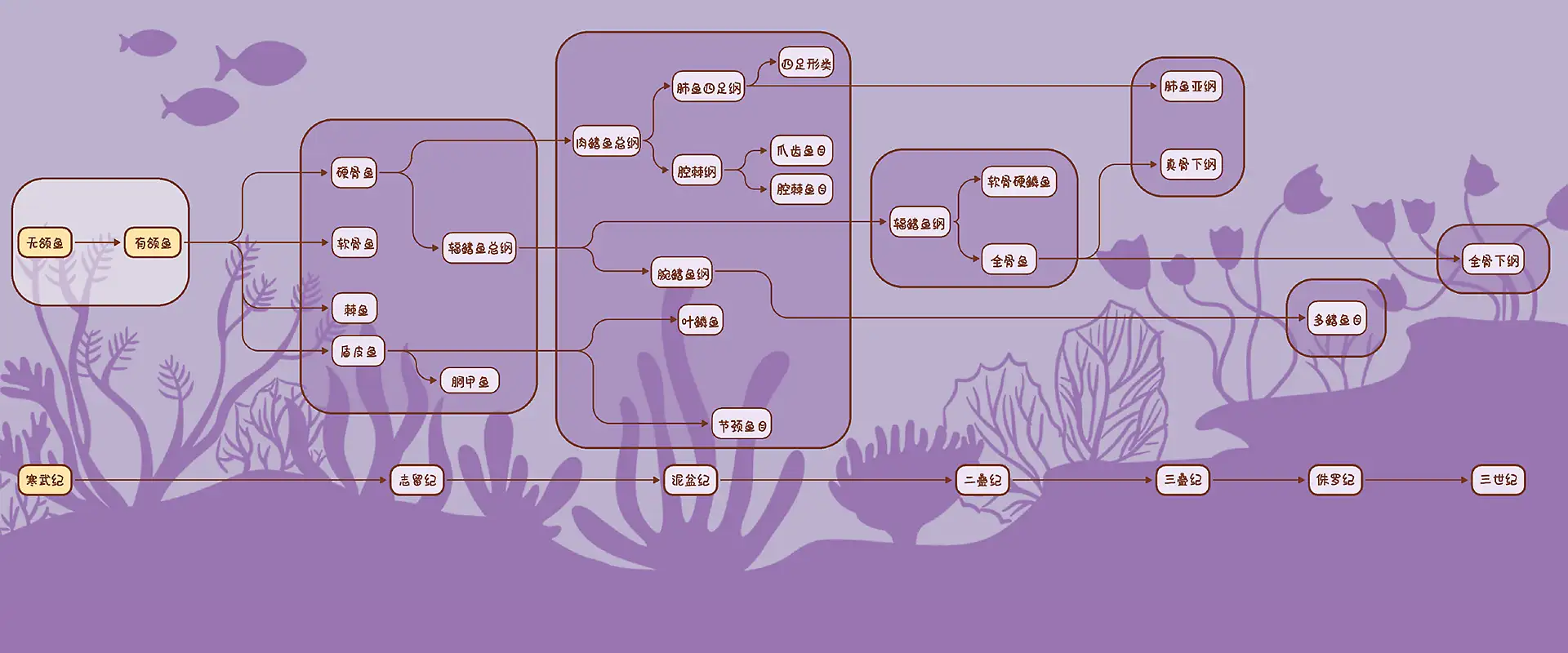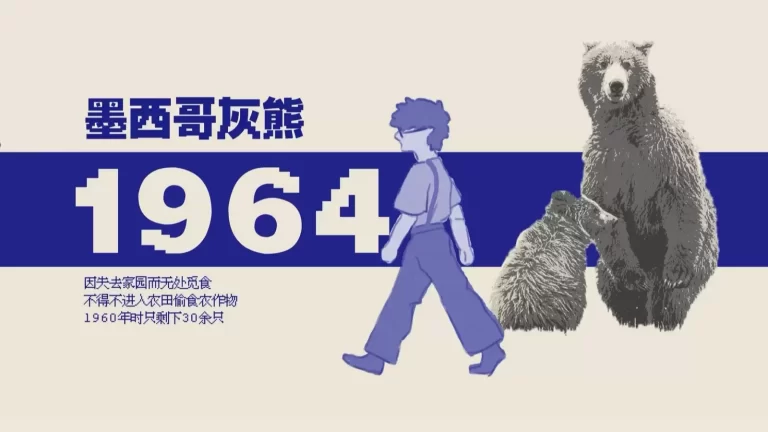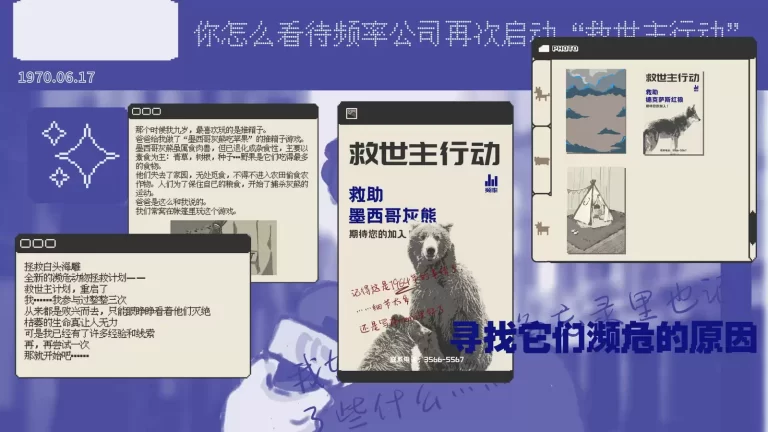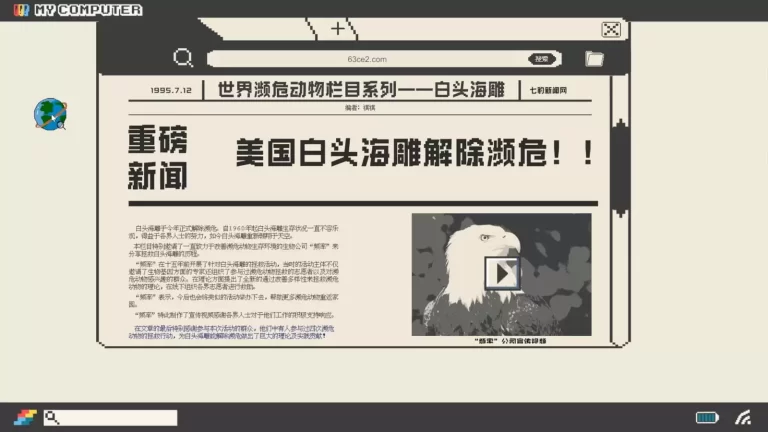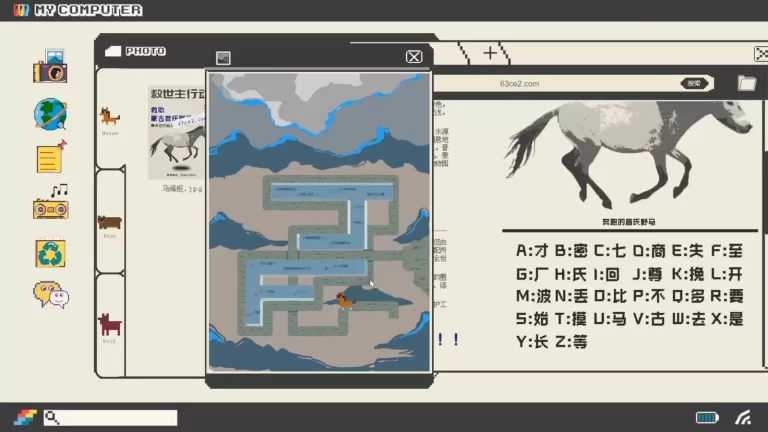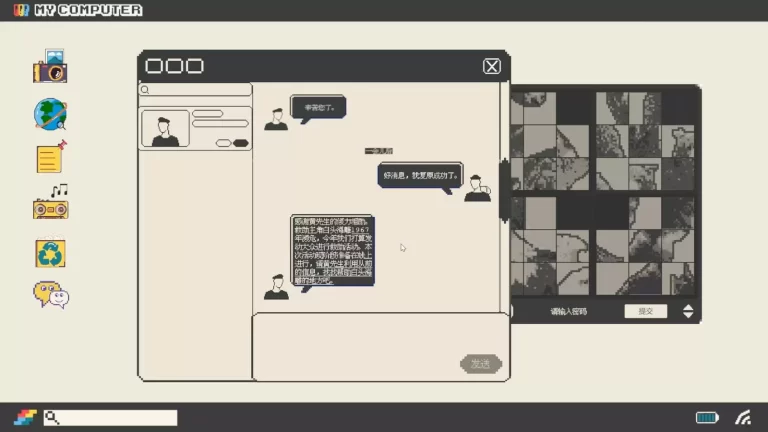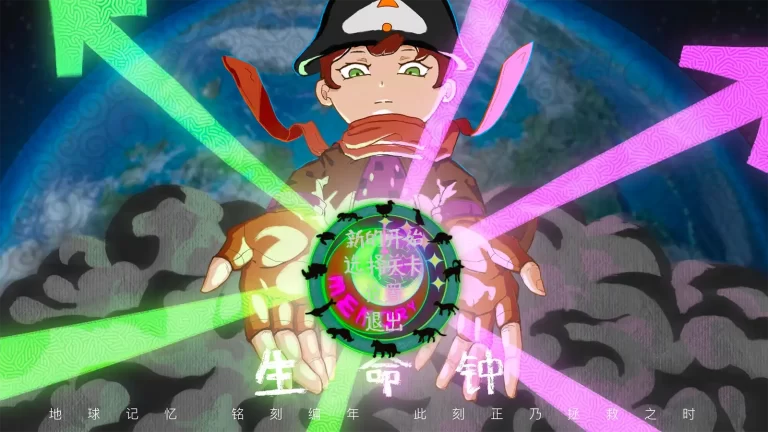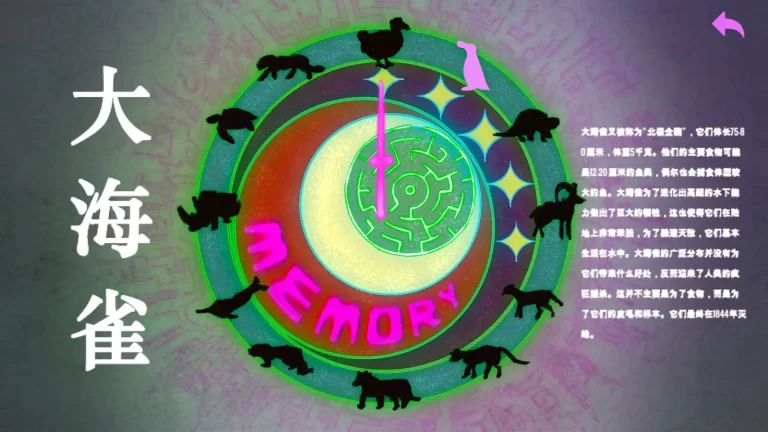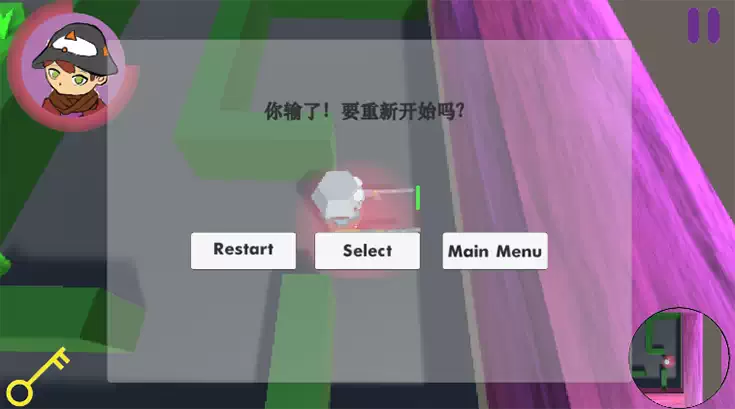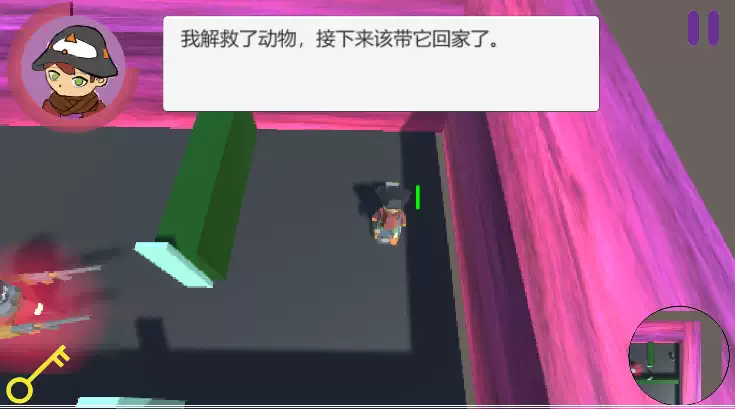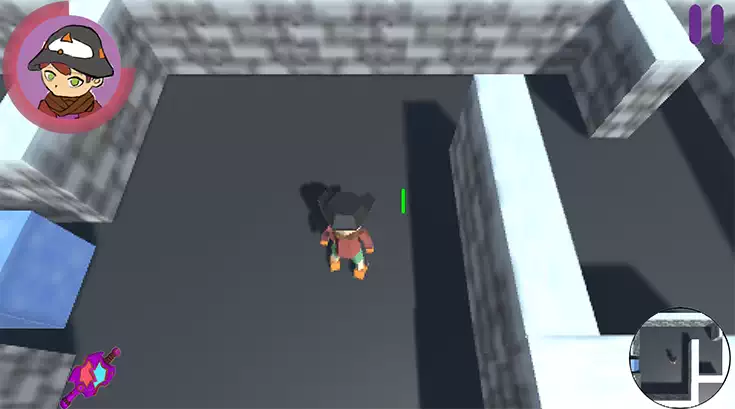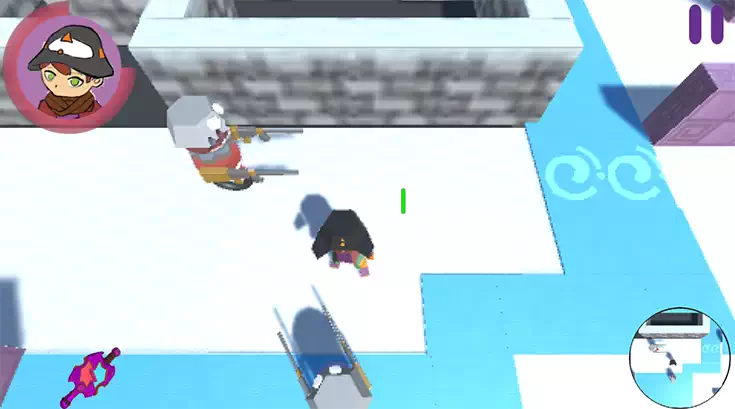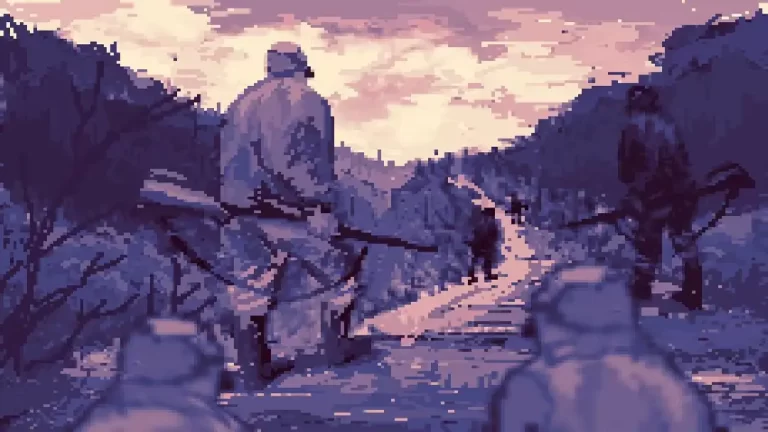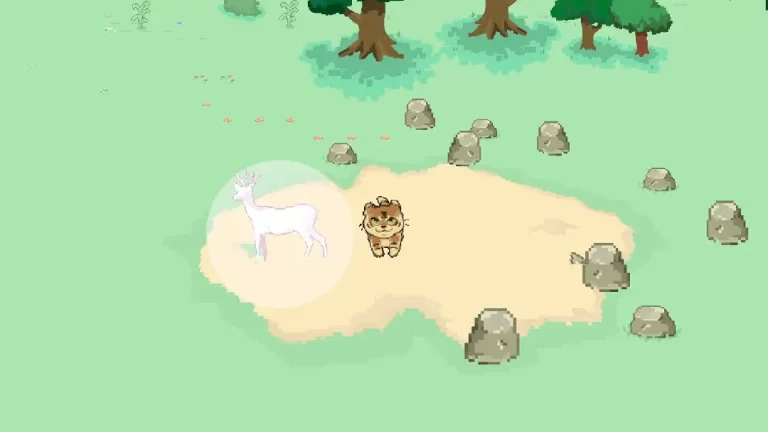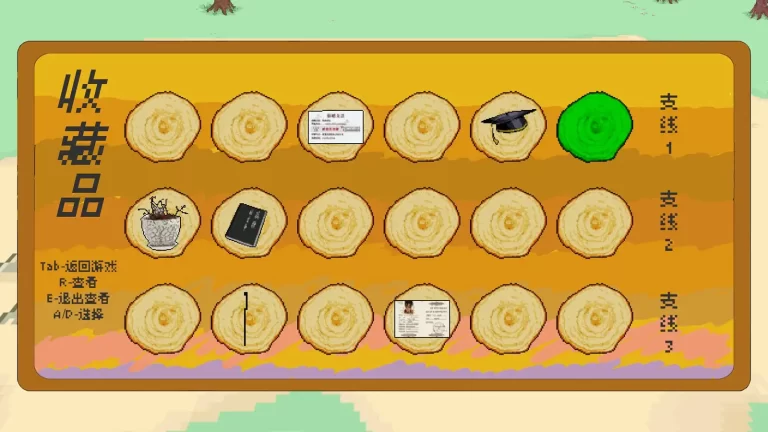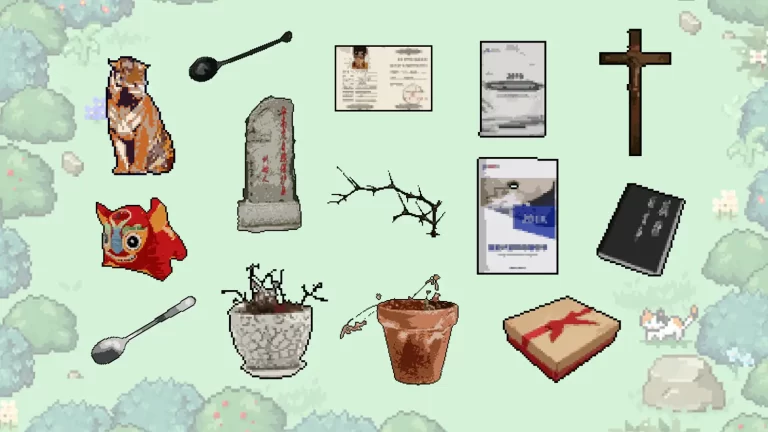
Design and Development of Serious Games on Life Science Themes
Tongji Design and Innovation College and BGI Group have joined forces once again after their collaboration on the “Huo-Yan Laboratory”. Leveraging BGI Group’s globally leading research influence, they present BGI’s strategic research directions in “The Growth of All Things” and “The Origins of Life” through functional games in an imaginative and engaging manner. This innovative approach skillfully integrates hardcore scientific knowledge, game thinking, and interactive experiences, marking a new exploration in life science education and popularization by BGI and Tongji Design and Innovation College.
The following exhibits are the final creative works from the “Design Technology 3” course. Under the guidance of Professor Liu Zhejun, third-year Media and Communication students mastered the basic principles and core skills of digital game design and development. They designed functional games based on five of BGI’s research directions: “The Growth of All Things,” “Universal Grafting,” “Evolution of Fish,” “Penguin Evolution,” and “Endangered Animals.” The game prototypes were developed using the Unity engine. Throughout the creative process, the students collaborated with BGI’s field scientists, which not only enhanced their professional skills but also deepened their understanding of life sciences. This experience gradually cultivated their respect for life, reverence for nature, and commitment to sustainable development.

Course Name
Design Tech. 3
Game Design & Dev.
Students
Media and Comm.
Grade 2020
Partner
BGI Group
Advisors
Aaron Leo (Tongji University)
Chengran_Zhou Yiwei_Dong Tianming_Lan Yue_Song Cong_Tan (BGI Group)
Special Thanks
Xihan_Cheng Qiye_Li Huan_Liu Mingjiang_Lu Yunsheng_Su Lihua_Yang Yanmei_Zhu



Tutors: Aaron Leo, Cong Tan (BGI Group)

Creators / Juanyu Liu, Wenqi Zhang, Yichi Liu, Yi Jin
Introduction
This is a 2D serious game focused on adventure and puzzle-solving. The story takes place on an alien planet called [CORE], where energy can be produced from plants. Due to the depletion of energy resources on their home planet [J’zerl], a group of scientists was sent to [CORE] to find a solution to the energy crisis. They successfully discovered that the local plants could generate a significant amount of energy but recently lost contact. As a member of the second team of researchers sent from the home planet, players will take on the role of an apocalyptic scientist, traveling to [CORE] to continue studying the local plants and uncover the truth behind the disappearance of the first group of scientists.
//
Gameplay
Upon arriving at the planet [CORE], players will find the only remaining seed bank in the wreckage of the ark and will engage in artificial breeding to restore the planet. During this process, they will be attacked by berserk plants. The main objective of the game is to collect all the seeds, cultivate high-quality plants, and plant them extensively to transform the landscape and revive the planet. The side quests involve uncovering the truth behind the disappearance of the scientists as players explore and progress.
Throughout the game, players will not only have fun but also learn basic knowledge about plant growth and genetic editing.
//
Videos
Trailer
Concept Explanation

Creators / Xinyao Li, Xuehan Yu, Yinyin Yue, Muzi Duan
Story
With global climate and environmental changes, the once verdant and flourishing Aegean island now faces the disappearance of lettuce species. Laboratory instruments like test tubes, keyboards, and printers are scattered across the island. As an intern at the research institute, you are tasked with exploring the connection between lettuce genes and their phenotypes.
Upon your arrival on the island, you will encounter never-before-seen “spirits.” These spirits can speak and will guide you in completing your tasks on the island. With their help, you will use your intellect to solve puzzles: collecting plant fragments and gene fragments, attempting to combine them, and perhaps creating new powers in the process!
//
Introduction
This third-person adventure puzzle game currently features two islands: the Aegean Lettuce Island and the Snowy Mushroom Island. On the Aegean Island, players take on the role of Mira, an intern at the research institute. During her time at the institute, Mira receives a mission letter from the Aegean Island, explaining the island’s changes and requesting her help. This sets Mira off on a series of adventures on the Aegean Island, where she befriends “spirits,” rabbits, and other companions while uncovering the secrets of genetics through her explorations.
On the Winter Mushroom Island, the protagonist embarks on an adventure to learn about the genetic traits of fungi and mushrooms, gaining knowledge about their different characteristics.
//
Videos
Trailer
Concept Explanation


Tutors: Aaron Leo Yiwei Dong (BGI Group)

Creators / Youxiang Lin, Ziyi Lei, Xinyi Liang, Yu Lin
Introduction
SAVIOUR is a 3D platformer serious game based on grafting knowledge, showcasing the grafting process at the cellular level between rootstock and scion. To improve grafting compatibility, scientists explore the possibility of a “universal interstock” by cultivating a special plant containing unique cells. These cells can overcome various barriers and play a crucial role in the grafting experiment with their special abilities.
Players will take on the role of this special cell, exploring the microscopic world at different stages of plant grafting. They will complete various tasks, remove obstacles, and advance the grafting process.
//
Gameplay
The game features three levels, each simulating different stages of the grafting process: crossing the necrotic layer, callus division and adhesion, and xylem differentiation. Through these levels, players will gradually learn grafting knowledge while playing. They can also check their current level progress in the game’s encyclopedia, which provides scientific information about each scene and object.
Timing jumps onto moving platforms can help players avoid damage and safely navigate challenges. When encountering enemies, players don’t have to engage in combat; they can use defensive light spheres to push enemies away. The game boasts a distinctive cartoon art style and original soundtrack. Players can use skills to slow down time, increasing their chances of successfully completing levels. Become a lovable cell and explore the scientific mysteries of grafting!
//
Videos
Trailer
Concept Explanation

Creators / Xinjia Gong, Yuyu Cheng, Rui Tong, Jiayi Chen, Delin Li
Introduction
Scion is a pixel art platformer developed with Unity. The game follows the protagonist, who, accompanied by the sacred flower Scion, embarks on a journey to save the withering flower. With the help of the “Sacred Branch,” the protagonist travels far and wide, ultimately bringing the sacred flower back to full bloom.
The adventure begins with an encounter with the “Mountain Sage,” from whom the protagonist receives the Sacred Branch. Throughout the journey, the protagonist collects various branches. After completing each leg of the journey, the protagonist uses different grafting techniques to impart the beneficial traits of these branches to the Sacred Branch. These traits, once tested through the Sacred Branch’s trials, aid the protagonist in subsequent travels.
In the game’s finale, the protagonist returns to the sacred flower, harvests its new bud, and uses the Sacred Branch to graft the new traits onto the sacred flower, giving it new life.
//
Gameplay
Scion features classic platforming gameplay, including traditional movement, jumping, and item collection, along with three unique “grafting skills.” These grafting skills come from plants with different traits: the “weight increase” from a fruit-bearing scion, “cold resistance” from a frost-resistant rootstock, and “absorption of surrounding nutrients” from a strong-rooted rootstock. These grafting skills play a crucial role in the platforming exploration.
To acquire these grafting skills, players must first complete puzzles by combining different scions and rootstocks according to the shape of their cuts using various grafting techniques. Additionally, the game includes maze gameplay, symbolizing the process of obtaining grafting skills from the Sacred Branch and connecting the two aforementioned parts.
//
Videos
Trailer
Concept Explanation


Tutors: Aaron Leo, Chengran Zhou (BGI Group)

Creators / Ruoyu Dai, Jingyan Ju, Ziang Tian, Xiaoyu Zhao
Introduction
The game is set in a future where penguins have gone extinct, and humans have created mechanical penguins for observation, research, and fish harvesting. These mechanical penguins possess the same self-awareness and social behaviors as the real penguins that once existed. The protagonist, a failed experiment, is unaware that it is a mechanical penguin. Driven by curiosity about its own kind, it embarks on a journey to discover its identity.
Players must find and converse with different penguins to unravel the protagonist’s origins. As they learn about the various physical characteristics of these penguins, they will gradually uncover the truth about the world the protagonist inhabits.
//
Gameplay
The first level of the game is set in a glacier. Players control the protagonist using the keyboard to catch enough small fish within the scene. These fish are then delivered to different penguin clans to exchange for clues about their own identity. After interacting with a total of four clans, the protagonist advances to the second level.
The second level takes place in an underground laboratory, which includes sections such as a data wall, control room, specimen room, and cages. Players guide the protagonist to search through scattered boxes, props, and documents in the scene to gather clues, gradually uncovering the mystery of their identity.
//
As players search for clues about their identity, they can engage with NPCs through dialogue and interact with scene props to learn about the appearance and behaviors of penguins. Concurrently, the game’s narrative aims to raise awareness among players about the importance of protecting penguins. It serves as a call to action, urging people to do everything they can to prevent the extinction of penguins, a scenario that the game envisions becoming a reality in the future.
//
Videos
Trailer
Concept Explanation

Creators / Yidi Mao, Cifeng Lin, Kexin Liu, Shurui Li
Introduction
In the 30th century, penguin species have become extinct. To uncover the reasons behind this, players take on the role of a researcher at a biological research institute and enter the Penguin Temporal Laboratory. They travel back 65 million years to explore ancient Zealandia, the last known habitat of penguins.
With communication to the base interrupted, players collaborate with the soul of the last penguin to conduct research tasks such as photographing, scanning, and genetic sequencing different species of penguins. Following this, the researcher travels to the 21st century and discovers that penguins face numerous survival threats including poaching, global warming, and environmental pollution.
Ultimately, players return to the research institute with the collected data to raise awareness about the struggles of penguins and reveal the truth behind their extinction to the world.
//
Characters
Videos
Trailer
Concept Explanation

Creators / Sangni Li, Yicheng Shi, Yulin Li, Hongyun Chen
Introduction
The Penguin Museum is a side-scrolling puzzle adventure game set in Antarctica between December and March.
Players take on the role of a museum curator who accidentally travels to the world of penguins. While trying to return to their own world, they discover that the necessary golden egg for the journey has been stolen by an Adélie penguin. Known for their notorious behavior, Adélie penguins steal stones from their peers, push them into the water, and even drive away larger emperor penguin chicks to facilitate their own breeding.
To return home, players must use the behaviors of Adélie penguins to their advantage, collecting the stones Adélie penguins need in exchange for the golden egg needed for the journey.
//
Gameplay
Based on these unique behaviors of Adélie penguins, which contrast sharply with the commonly perceived “cute and clumsy” image, we have designed the storyline and puzzles of the game.
//
In the first level, just as the protagonist collects their first stone, they encounter penguin theft. To retrieve the stone, the protagonist must navigate past the penguin’s blockades and help drive away emperor penguin chicks in exchange for the stone.
In the second level, the protagonist uses the Adélie penguin’s affinity for eating krill (which appear pink) to their advantage. They manipulate light refraction to lure the penguins into moving, thereby accessing stones surrounded by them.
In the first level, just as the protagonist collects their first stone, they encounter penguin theft. To retrieve the stone, the protagonist must navigate past the penguin’s blockades and help drive away emperor penguin chicks in exchange for the stone.In the second level, the protagonist uses the Adélie penguin’s affinity for eating krill (which appear pink) to their advantage. They manipulate light refraction to lure the penguins into moving, thereby accessing stones surrounded by them.
In the final level, the protagonist assists Adélie penguins in organizing their nests to gather more stones. Afterward, the protagonist successfully retrieves the golden egg and returns to the real world, concluding the Adélie penguin chapter of the Penguin Museum adventure.
//
Characters
Videos
宣发视频
理念阐释


指导老师:柳喆俊 宋跃(华大集团)

Creators / Jiahe Li, Jingde Gao, Yuhang Bai, Yunqi Li
Introduction
”Reenact the course of evolution with your choices.”
Sead is an educational platformer RPG game based on the evolutionary history of fish. The game is set in an imaginary world where an ecological disaster is gradually unfolding. Humanity seeks to accelerate the evolution of life through technological means until a new generation of humans is capable of entering an Eden that preserves all the brilliance of the Golden Age. This process, aimed at shortening the dark age to three thousand years, is called “Historical Reenactment,” codenamed Sead.
Players will learn about fish evolution as they progress through the game and will attempt to reenact the evolutionary process through their own choices.
//
Science Communication
The game establishes a connection between gameplay and education through “Cores” (representing major stages of evolution) and “Amplifications” (representing significant evolutionary traits), which are closely related to the abilities of the characters. The effects of Cores and Amplifications are based on the roles and manifestations of these elements in real evolutionary history. Different Cores can be paired with different Amplifications, symbolizing that various evolutionary stages have distinct characteristics. This setup not only aligns with the fundamental framework of evolution but also enhances the gameplay experience.
//
Videos
Trailer
Concept Explanation

Creators / Yuhan Li, Yutong Jiang, Rui Sun, Zitong Wang
Introduction
Time-Traveling Fish is a mobile game centered on fish evolution and collecting an illustrated guide. Players will gather the necessary supplies for a clownfish’s journey in Coral Paradise, placing the corresponding items in their backpack to help the clownfish begin its travels. During its journey, the clownfish will send back photos from different periods. These photos might occasionally be incomplete, and players need to “repair” the photos through four different mini-games, subsequently adding them to the family tree.
As the game progresses and the number of journeys increases, the photos will gradually form a complete family tree of fish evolution.
//
The game brings the cold, textbook-like phylogenetic tree to life with engaging and enjoyable collectible gameplay. It conveys rigorous scientific information in a light and accessible manner. With a simple interface and easy-to-master gameplay mechanics, every player can experience a sense of companionship, participation, and achievement while gaining knowledge about fish evolution.
//
Videos
Trailer
Concept Explanation


指导老师:柳喆俊 兰天明(华大集团)

Creators / Shangyuan Gao, Xiangru Guo, Ruoyi Liu
Introduction
This is a pixel art story-driven puzzle game. The protagonist, played by the player, is a volunteer who participated in endangered animal rescue activities in the last century. A biotechnology company named “Frequency” contacts the protagonist to involve them in a new mission to save the endangered bald eagle.
Players interact with a computer’s desktop system, where they must gather research experiences related to rescue activities. These experiences help “Frequency” save the endangered bald eagles. Additionally, players use related clues to recover the protagonist’s lost memories.
//
Videos
Trailer
Concept Explanation

Creators / Yichang Zhang, Jiajun Qi, Yixiao Wu, Yansong Cheng, Xiaosong Ma
Introduction
This game is themed around twelve animal species that have gone extinct due to human overhunting, with twelve levels corresponding to the twelve marks on a clock, as referenced in the title. Currently, two levels have been completed. The image of the clock frequently appears on the main and level selection screens.
The game emphasizes educational content, reflecting the survival challenges faced by various endangered animals in its environments. Upon completing each level, players are presented with information about the corresponding animal and the reasons for its extinction. The goal is to provide players with more knowledge and insights.
//
Gameplay
Players need to control the protagonist to navigate through mazes, find the keys to rescue the corresponding animals, and return them to their habitats, all while avoiding pursuit by monster robots. If a robot catches the protagonist, the game is over, and the player must restart the level. Players have a stamina limit; once the stamina bar is depleted, the protagonist can no longer run. Since the robots’ normal movement speed is faster than the protagonist’s walking speed, players must strategically balance running and walking times. The game encourages using terrain and movement techniques to evade the robots.
The difficulty increases as the game progresses. In the second level, players must interact with mirrors and ice blocks in igloos, controlling the melting and freezing of ice blocks. Additionally, the number of enemies will continuously increase, adding to the challenge.
//
Videos
Trailer
Concept Explanation

Creators / Yiting Xu, Siqi Chen, Siyu Mu, Tongxuan Zhao
Introduction
In the future, the South China tiger and many other animals have gone extinct. Players take on the role of a South China tiger that has been re-bred through human restoration technology, returning to the wild to attempt rewilding. The tiger communicates with ancient memories within its bloodline, activating different memory fragments in various situations to learn the survival skills and lifestyle of a wild South China tiger. As the tiger progresses, it gradually uncovers the reasons for the extinction of the South China tiger, revealing the truth behind their disappearance in the wild. After completing the entire rewilding process, the player will be guided by their bloodline to find another South China tiger of the opposite sex, also restored through technology, in order to continue the species.
//
Story
Researchers hoping to bring the South China tiger back to life, philosophers contemplating the relationship between humans and other living beings, and rangers who love nature but disdain humanity—these three individuals come together because of the tiger’s “resurrection” project. Together, they establish the field laboratory, bring back the South China tiger, and leave various traces in the forest.
As the player controls the tiger, they will search for and collect these items and traces, gradually piecing together fragments of the lives of these three individuals. Through this, players will gain insight into their distinct yet interconnected lives and philosophies.
//
Videos
Trailer
Concept Explanation
Games are the most comprehensive and complex form of digital media: from writing story scripts, designing gameplay mechanics, and drawing conceptual settings, to creating art assets, coding, and using game engines. For students new to game design and development, completing such a challenging project that combines both artistic and technical aspects in such a short time is truly commendable! What makes this project even more special is the strong support from the team of scientists at BGI Group. Students not only learned how to design and develop games but also gained insights into the forefront of life sciences. This experience expanded their knowledge boundaries and honed their interdisciplinary collaboration skills, opening up new, limitless possibilities for their future development.
Finally, on behalf of the course instructor, I would like to extend heartfelt congratulations to all the hardworking students and sincere gratitude to the dedicated BGI experts for their invaluable contributions!
Aaron Leo Feb. 2023

